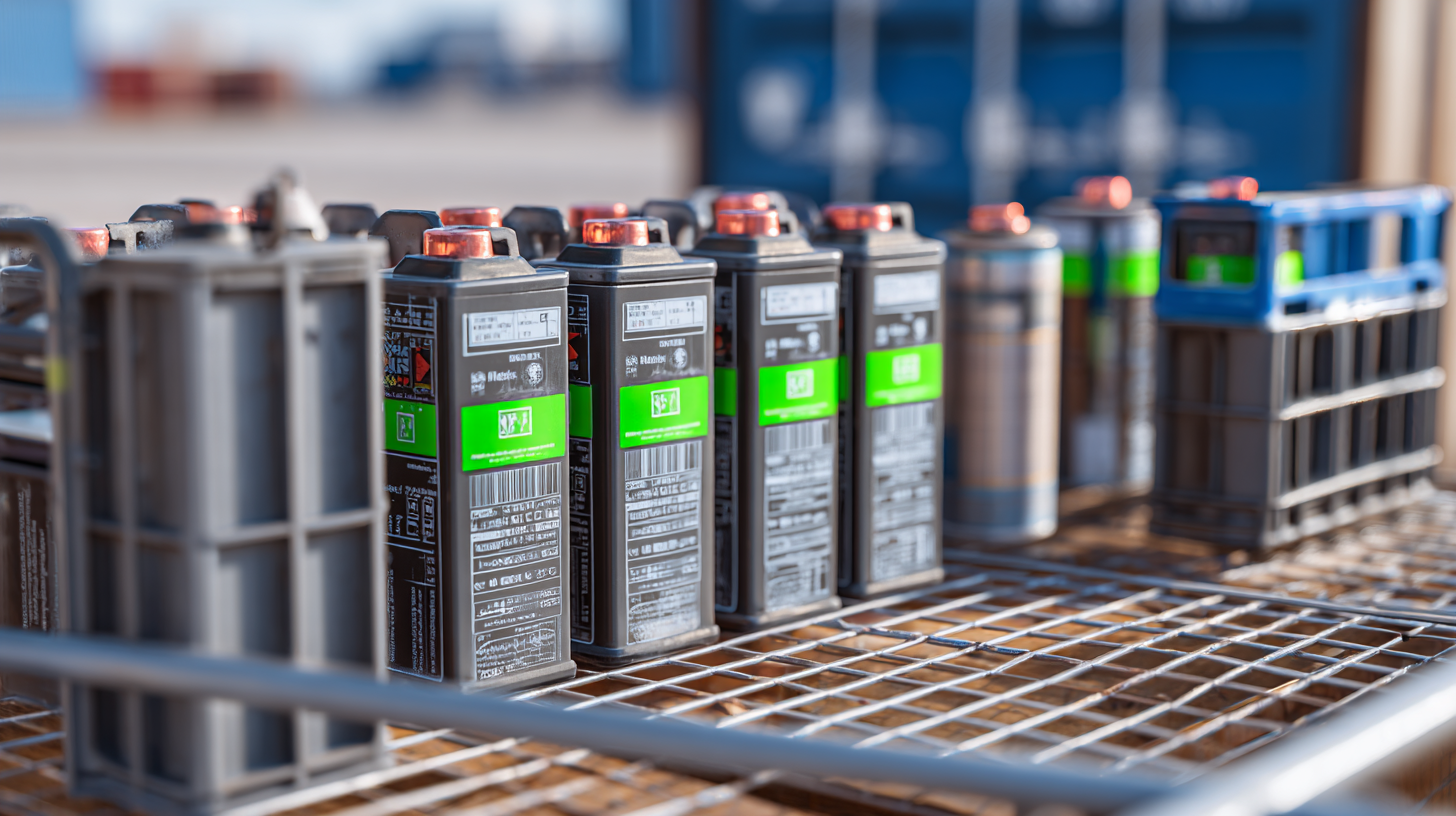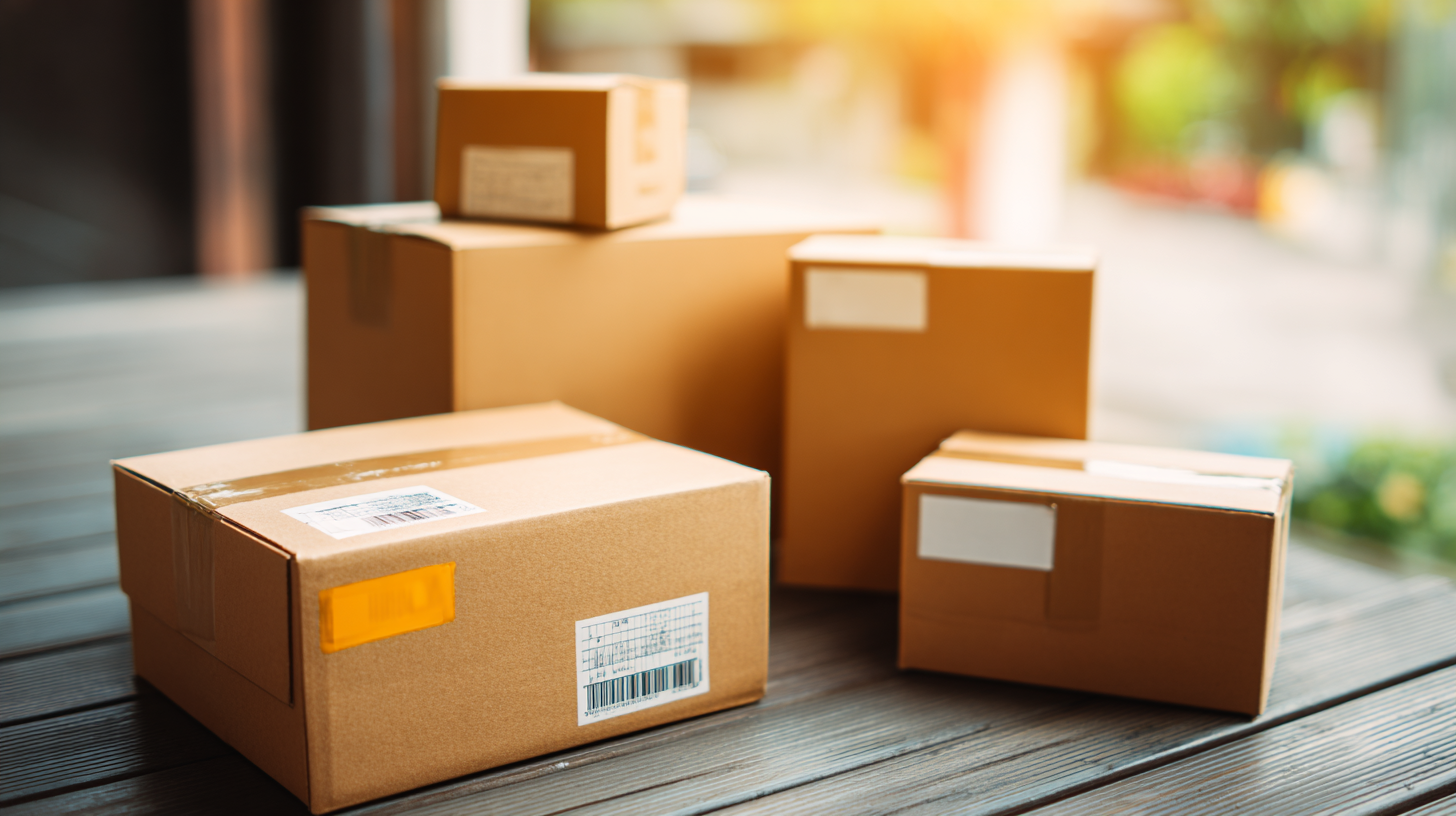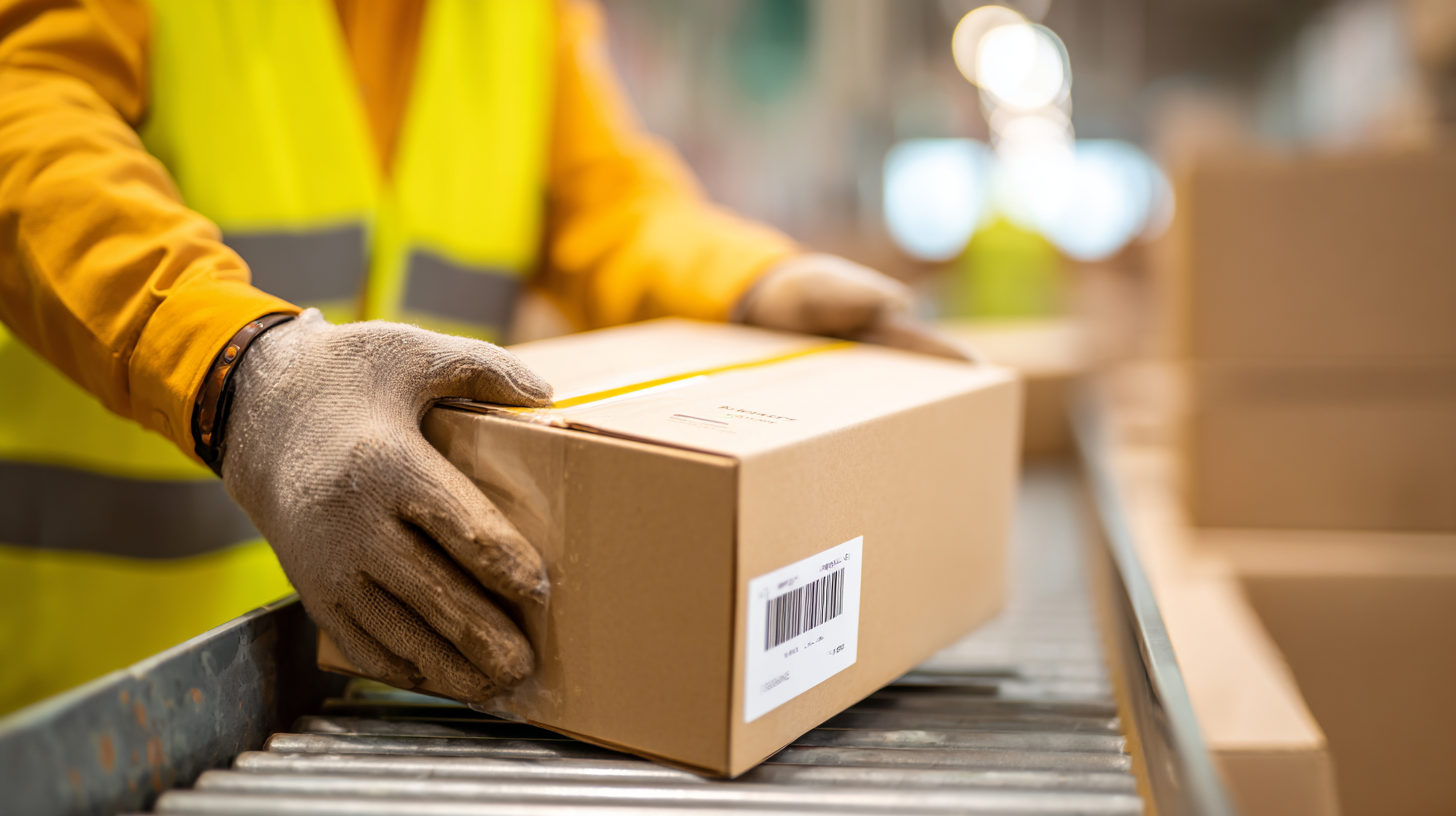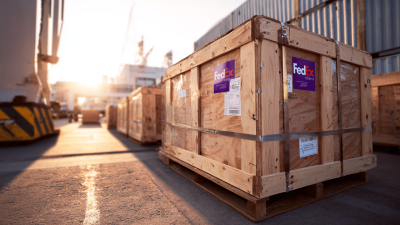How to Effectively Ship Lithium Batteries: A Complete Guide to Shipping Labels
 Shipping lithium batteries presents unique challenges and requirements that must be carefully navigated to ensure compliance and safety. According to the International Air Transport Association (IATA), the transportation of lithium batteries has increased significantly, with a reported growth of over 9% in shipments from 2019 to 2021. As these batteries power essential devices across various industries, understanding how to properly use a shipping label lithium battery is crucial for businesses to avoid potential penalties or hazardous incidents. Proper labeling not only aids in compliance with regulations set forth by the U.S. Department of Transportation (DOT) and the IATA but also ensures that packages are handled appropriately throughout the shipping process. This comprehensive guide aims to provide effective strategies for generating and utilizing shipping labels for lithium batteries, empowering shippers to contribute to a safer transportation network while meeting the demands of a growing market.
Shipping lithium batteries presents unique challenges and requirements that must be carefully navigated to ensure compliance and safety. According to the International Air Transport Association (IATA), the transportation of lithium batteries has increased significantly, with a reported growth of over 9% in shipments from 2019 to 2021. As these batteries power essential devices across various industries, understanding how to properly use a shipping label lithium battery is crucial for businesses to avoid potential penalties or hazardous incidents. Proper labeling not only aids in compliance with regulations set forth by the U.S. Department of Transportation (DOT) and the IATA but also ensures that packages are handled appropriately throughout the shipping process. This comprehensive guide aims to provide effective strategies for generating and utilizing shipping labels for lithium batteries, empowering shippers to contribute to a safer transportation network while meeting the demands of a growing market.
Understanding Lithium Battery Regulations and Compliance Requirements
When shipping lithium batteries, it is crucial to understand the regulations and compliance requirements that govern their transportation. According to the International Air Transport Association (IATA), over 1.5 billion lithium batteries were shipped worldwide in 2020, highlighting the significance of adhering to safety standards. Improperly handled, lithium batteries can pose risks, including fire hazards, making regulatory knowledge indispensable for safe shipping practices.
 Tip: Always check the UN number designated for lithium batteries, which is UN3480 for non-packaged or standalone batteries and UN3481 for batteries contained in or packed with equipment. Proper labeling is essential and can greatly reduce the chance of accidents during transport.
Tip: Always check the UN number designated for lithium batteries, which is UN3480 for non-packaged or standalone batteries and UN3481 for batteries contained in or packed with equipment. Proper labeling is essential and can greatly reduce the chance of accidents during transport.
Compliance with local and international regulations, such as the Department of Transportation (DOT) in the U.S and the European Agreement concerning the International Carriage of Dangerous Goods by Road (ADR), is mandatory. For instance, IATA guidelines require lithium-ion batteries to be packed in a manner that protects them from physical damage and short circuits. As of 2022, these regulations have become more stringent, and companies must stay updated to avoid costly fines.
Tip: Invest in training your shipping personnel on the latest regulations to ensure compliance and facilitate smoother shipping processes. Regular updates and training can significantly enhance safety and efficiency.
Choosing the Right Packaging for Safe Lithium Battery Shipping
When shipping lithium batteries, choosing the right packaging is crucial to ensure safety and compliance with regulations. Lithium batteries, particularly lithium-ion and lithium metal types, can pose fire risks if they are not properly packaged. To mitigate these risks, select packaging that is both sturdy and able to withstand potential impact. Use materials that are specifically designed for hazardous materials, such as boxes that provide adequate cushioning and protect against short circuits.
**Tips:** Always ensure that the terminals of the lithium batteries are insulated. This can be achieved by using non-conductive tape or placing them in individual plastic bags. Additionally, include labels that clearly indicate the contents are lithium batteries, as this will inform carriers of the special handling required.
Moreover, consider the size and weight of the batteries when selecting packaging. It is important they are not too tightly packed, which could lead to pressure and potential damage during transit. Ensure that each package is labeled correctly, indicating whether the batteries are packed in accordance with the latest IATA or DOT regulations, providing peace of mind that all safety protocols are being followed.
Shipping Lithium Batteries - Weight Classes and Costs
Creating Accurate Shipping Labels: Essential Information to Include
 When shipping lithium batteries, creating accurate shipping labels is crucial to ensure compliance with regulatory requirements and safe transportation. According to industry standards outlined by the International Air Transport Association (IATA), shipping labels for lithium batteries must include specific information such as the UN number (UN3480 or UN3481) and the appropriate warning symbols. These elements inform carriers and handlers about the potential hazards of the contents. Missing or incorrect information can lead to serious delays or penalties.
When shipping lithium batteries, creating accurate shipping labels is crucial to ensure compliance with regulatory requirements and safe transportation. According to industry standards outlined by the International Air Transport Association (IATA), shipping labels for lithium batteries must include specific information such as the UN number (UN3480 or UN3481) and the appropriate warning symbols. These elements inform carriers and handlers about the potential hazards of the contents. Missing or incorrect information can lead to serious delays or penalties.
Tips: Always double-check the dimensions and weight of the package, as this can impact shipping costs and delivery timeframes. Additionally, consult the latest guidelines from IATA and the Department of Transportation (DOT) to stay updated on any changes in shipping regulations.
It's also essential to indicate whether the batteries are installed in equipment or shipped separately. Packages should clearly state if they contain lithium batteries, as this influences how they are handled during transit. Companies should be aware that failure to follow the guidelines can lead to a 20% increase in shipping costs and a higher risk of accidents during transport, as reported by the Freight Transportation Research Group.
Selecting Appropriate Shipping Carriers for Lithium Batteries
When it comes to shipping lithium batteries, selecting the appropriate carrier is crucial for compliance and safety. Not all shipping companies possess the necessary expertise or capacity to handle hazardous materials correctly. It is essential to choose carriers that have established protocols for lithium battery transportation, as well as training programs for their staff to ensure that the batteries are packaged and labeled according to regulations.
Different carriers may also have varying policies regarding weight limits, package dimensions, and required documentation. Researching these aspects can save time and resources during the shipping process. Major carriers such as FedEx and UPS offer specific guidelines for shipping lithium batteries, including the necessary labeling and declaration forms. Ensuring that the chosen carrier is knowledgeable about the latest regulations, such as those set by the International Air Transport Association (IATA) and the U.S. Department of Transportation, will help to avoid potential legal issues and ensure safe delivery.
Best Practices for Tracking and Managing Lithium Battery Shipments
Shipping lithium batteries, particularly via air, presents unique challenges that require attention to best practices for tracking and managing shipments effectively. One of the most critical aspects is the adherence to international regulations, such as the IATA Dangerous Goods Regulations (DGR). It’s essential to ensure that all packages are correctly labeled and documented to facilitate smooth transit and compliance with safety standards. Improved packing techniques, which include using sturdy containers and appropriate cushioning materials, are also vital.
Tips for managing lithium battery shipments include implementing a robust tracking system to monitor the status of your shipment in real-time. This can help locate any delays or issues immediately, allowing for prompt resolutions. Additionally, engaging in enhanced screening practices, such as canine detection, can further ensure the safety of the cargo and compliance with regulations. Always keep abreast of the latest guidelines and recommendations from relevant authorities to mitigate risks associated with transporting these potentially hazardous goods.
Maintaining effective communication within your supply chain is also crucial. Collaborate with logistics providers who specialize in lithium battery transport and adhere to certification standards. This will not only optimize your shipping processes but also assure compliance with safety measures, ultimately leading to a smoother shipping experience.
How to Effectively Ship Lithium Batteries: A Complete Guide to Shipping Labels - Best Practices for Tracking and Managing Lithium Battery Shipments
| Shipping Method |
Label Type |
Tracking Method |
Best Practices |
Regulation Compliance |
| Ground Shipping |
Hazardous Material Label |
Standard Tracking |
Ensure proper packaging |
IATA Regulations |
| Air Shipping |
Lithium Battery Mark |
GPS Tracking |
Use approved carriers |
FAA Requirements |
| Express Delivery |
Special Lithium Battery Label |
Real-time Tracking |
Clearly declare contents |
ICAO Guidelines |
| International Shipping |
UN3480/UN3481 Label |
End-to-end Tracking |
Check destination regulations |
Customs Compliance |


 Shipping lithium batteries presents unique challenges and requirements that must be carefully navigated to ensure compliance and safety. According to the International Air Transport Association (IATA), the transportation of lithium batteries has increased significantly, with a reported growth of over
Shipping lithium batteries presents unique challenges and requirements that must be carefully navigated to ensure compliance and safety. According to the International Air Transport Association (IATA), the transportation of lithium batteries has increased significantly, with a reported growth of over 
 When shipping lithium batteries, creating accurate shipping labels is crucial to ensure compliance with regulatory requirements and safe transportation. According to industry standards outlined by the International Air Transport Association (IATA), shipping labels for lithium batteries must include specific information such as the UN number (UN3480 or UN3481) and the appropriate warning symbols. These elements inform carriers and handlers about the potential hazards of the contents. Missing or incorrect information can lead to serious delays or penalties.
When shipping lithium batteries, creating accurate shipping labels is crucial to ensure compliance with regulatory requirements and safe transportation. According to industry standards outlined by the International Air Transport Association (IATA), shipping labels for lithium batteries must include specific information such as the UN number (UN3480 or UN3481) and the appropriate warning symbols. These elements inform carriers and handlers about the potential hazards of the contents. Missing or incorrect information can lead to serious delays or penalties.







